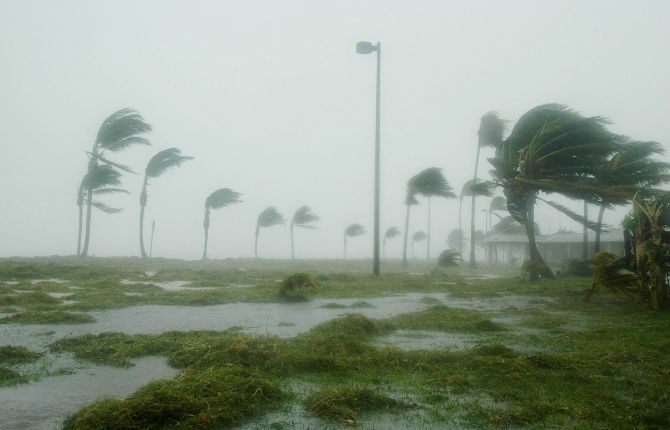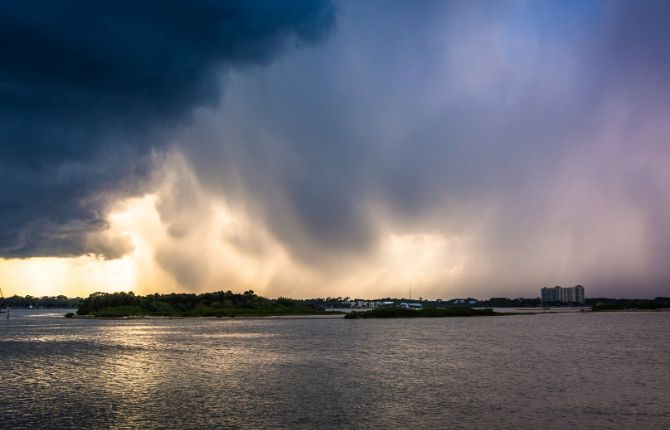What is the best time of the year to visit Florida? Well, it depends on your preferences and priorities. Whether you’re chasing the sun, budget-conscious, or looking for a balance, Florida offers something for everyone year-round.
When it comes to planning a trip to Florida, timing can make or break your experience. Florida’s weather and tourist seasons vary throughout the year, so choosing the best time to visit is crucial.
For those seeking sunny skies and warm temperatures, the winter months from November to April are ideal. The pleasant climate during this period attracts snowbirds and vacationers from colder regions. However, prices tend to be higher, and popular destinations can get crowded.
If you prefer a quieter, more budget-friendly trip, consider visiting in the shoulder seasons of spring (April to May) and fall (September to October). You’ll still enjoy pleasant weather and fewer crowds.
Summer (June to August) can be hot and humid, but it’s perfect for water activities and family vacations. Just be prepared for afternoon rain showers.
What Is The Best Time Of Year To Visit Florida?
Weather Considerations
Temperatures
Florida’s year-round appeal owes much to its diverse climate. As a traveler’s paradise, the Sunshine State offers something for everyone, whether you’re seeking sun-soaked beaches or outdoor adventures.
Understanding Florida’s temperature variations is key to planning your visit effectively.
Winter in Florida (December to February) is a mild escape from the icy grip of northern winters, with temperatures averaging 50-70°F (10-24°C). Spring (March to May) ushers in pleasant warmth, ranging from 70-85°F (21-29°C), making it ideal for outdoor activities.
Summers (June to August) sizzle with highs of 90-95°F (32-35°C), perfect for beachgoers but prepare for afternoon rain showers. Fall (September to November) brings relief, with temperatures again around 70-85°F (21-29°C).
Whether you’re a snowbird or a sunseeker, Florida’s climate offers a year-round playground, making it an unbeatable travel destination.
Hurricane Season in Florida
Florida, renowned for its stunning beaches and vibrant cities, is also infamous for its hurricane season. Travelers planning a visit during this time must stay informed and prepared to ensure a safe and enjoyable trip.

Hurricane season in Florida typically spans from June 1st to November 30th. To minimize risks, consider visiting in the early or late months of this period, when the chances of a hurricane hitting are lower.
Monitor weather forecasts regularly, especially during your stay. Apps and websites like the National Hurricane Center provide real-time updates.
Here are some advises from us.
Invest in comprehensive travel insurance to safeguard your trip against unexpected disruptions.
Have a flexible itinerary that allows for changes in case of severe weather. Be prepared to reschedule or relocate if necessary.
Pack an emergency kit with essential supplies like water, non-perishable food, flashlights, and a first-aid kit.
Choose hotels or accommodations with hurricane-resistant structures and evacuation plans in place.
Familiarize yourself with local evacuation routes and shelters in the area you’re visiting.
Keep your loved ones informed about your travel plans and itinerary, and establish a reliable means of communication.
Listen to local authorities and follow their instructions during emergencies.
Accept that your trip may need to be postponed or canceled if a hurricane threatens.
With careful planning and vigilance, you can enjoy the beauty of Florida while staying safe during hurricane season. Remember, preparedness is the key to a worry-free adventure.
Rainfall
The Sunshine State experiences a subtropical climate with distinct wet and dry seasons. From June to September, Florida encounters its wettest months, characterized by daily afternoon thunderstorms.
These short, intense downpours are typically followed by clear skies. However, don’t let the rain deter your plans; it’s an ideal time to explore Florida’s lush, vibrant flora and take advantage of reduced crowds.
For dryer conditions, consider visiting during the winter months, when rainfall is minimal, making it perfect for outdoor adventures.
Humidity
When planning a trip to Florida, understanding the humidity throughout the year is crucial for a comfortable and enjoyable experience. Florida’s climate is known for its high humidity levels, making it important to choose the right time to visit.
In the summer months, from June to September, Florida experiences its highest humidity levels. With daily averages hovering around 70-75%, it can feel quite oppressive. However, this is also the best time to enjoy Florida’s beautiful beaches and water activities.
For those seeking a milder climate with lower humidity, the winter months from November to February are ideal. Humidity levels drop to a more comfortable 60-65%, making outdoor explorations and theme park adventures more pleasant.
Florida’s humidity varies throughout the year, so plan your visit accordingly to make the most of your trip.
Afternoon Thunderstorms in Florida
When it comes to traveling in the Sunshine State, it’s essential to prepare for the unexpected: afternoon thunderstorms.

Florida’s unique climate features a pattern of scattered storms that can strike throughout the year. While these sudden weather changes might seem daunting, they don’t have to put a damper on your vacation plans.
Here’s a travel guide to help you make the most of your Florida experience while staying safe and dry.
Thunderstorms in Florida are most common during the summer months, but they can occur year-round. They typically hit in the afternoon, so plan outdoor activities in the morning to avoid getting caught in the rain.
Be sure to pack essentials like a lightweight raincoat, an umbrella, and waterproof shoes. These items will prove invaluable when a sudden downpour strikes.
Keep an eye on the weather forecast. There are numerous smartphone apps and websites that provide real-time updates, allowing you to plan your day accordingly.
As Florida offers a plethora of indoor attractions, from museums to shopping malls. Having a backup plan for rainy days ensures your vacation remains enjoyable.
Don’t hesitate to ask locals for tips and recommendations. They’re often the best source of information on how to navigate the unpredictable Florida weather.
Be flexible with your itinerary. If a thunderstorm rolls in, use it as an opportunity to relax, enjoy a local café, or explore indoor attractions.
Florida is known for its lightning strikes. If you’re caught outdoors during a storm, seek shelter immediately, but avoid tall trees and open fields. Stay indoors until the storm passes.
If you’re planning a beach day, remember that thunderstorms can develop quickly. Keep an eye on the sky, and if you see dark clouds or hear thunder, head back to shore immediately.
While afternoon thunderstorms can be unpredictable, having a well-thought-out itinerary with backup options will ensure you make the most of your time in the Sunshine State.
Crowd Levels
Spring Break in Florida
When it comes to spring break destinations, Florida tops the list for good reason. With its sun-kissed beaches, vibrant nightlife, and an array of activities, the Sunshine State offers something for every traveler.

Florida boasts some of the world’s most renowned beaches. Miami’s South Beach is a hotspot for partygoers, while Clearwater Beach offers a serene escape. Don’t forget the emerald waters of Destin and the laid-back vibes of the Florida Keys.
Orlando, known as the “Theme Park Capital of the World,” is home to Walt Disney World, Universal Orlando Resort, and more. Get your adrenaline fix on roller coasters and immerse yourself in magical worlds.
Explore Florida’s diverse ecosystems by visiting the Everglades, where airboat tours offer a glimpse of unique wildlife. For a different kind of adventure, head to the springs of central Florida for crystal-clear waters and lush landscapes.
Miami’s nightlife is legendary, with clubs like LIV and E11EVEN offering top-tier DJs and unforgettable parties. For a more relaxed evening, sip cocktails at beachfront bars along Ocean Drive.
Florida’s culinary scene is as diverse as its attractions. Try fresh seafood at coastal restaurants, savor Cuban cuisine in Miami’s Little Havana, or enjoy Southern comfort food in the Panhandle.
Florida caters to all budgets. Camp at state parks, book budget accommodations, and take advantage of free or low-cost attractions to make your spring break affordable.
Whether you’re seeking adventure, relaxation, or non-stop partying, Florida’s got it all. Plan your spring break getaway to the Sunshine State, and you’ll create unforgettable memories that will last a lifetime.
What Is The Best Time Of Year To Visit Florida
Peak Season
Florida’s peak season is a traveler’s paradise, offering an ideal escape from chilly winters elsewhere.
From November to April, the Sunshine State lives up to its name, boasting pleasant temperatures and countless attractions. To make the most of your Florida adventure, follow this travel guide.
Start in Miami, where the vibrant art scene, glamorous beaches, and sizzling nightlife await. Continue down to the Florida Keys for unparalleled snorkeling and Key West’s charming eccentricities.
Explore the magical world of Orlando’s theme parks, then head to the Gulf Coast for tranquil beaches and sunsets. Don’t forget to savor fresh seafood and citrus delights, such as key lime pie. With its diverse offerings, Florida’s peak season promises unforgettable experiences.
Off-Peak Season
Florida, often associated with bustling theme parks and crowded beaches, offers a quieter, more authentic experience during its off-peak season. Escape the crowds and scorching sun by planning your visit between September and November.
1. Perfect Weather: Fall brings mild temperatures and lower humidity, making outdoor activities like hiking, biking, and golfing a delight.
2. Affordable Rates: Off-peak translates to wallet-friendly vacations. Enjoy discounted accommodations, car rentals, and attraction tickets.
3. Serene Beaches: Discover serene shorelines, enjoy peaceful sunsets, and experience Florida’s natural beauty without the beachfront chaos.
4. Local Charm: Embrace the local culture and cuisine, as restaurants and shops offer a more intimate experience.
5. Wildlife Encounters: Witness migrating birds and manatee gatherings in their natural habitats.
For an unforgettable Florida experience without the crowds, off-peak is the way to go. Plan your tranquil getaway today!
Best Time of the Year to Visit Florida for Activities
Beach Activities
When it comes to planning a beach vacation in Florida, timing is everything. Florida’s climate is known for its year-round warmth, but there are certain times of the year that stand out as the best for beach activities.
The prime time to visit Florida for beach enthusiasts is from late spring to early fall.
May through September offers the ideal weather conditions, with temperatures ranging from 75°F to 90°F (24°C to 32°C). During these months, the Gulf of Mexico and Atlantic Ocean waters are comfortably warm, perfect for swimming, snorkeling, and water sports.
While summer is the peak season, it also means larger crowds and higher prices. If you prefer a quieter experience, consider visiting in late spring or early fall when the weather is still fantastic, but the crowds have thinned out.
For those seeking a balance between pleasant weather and affordability, shoulder seasons like April and October can be excellent choices. You’ll enjoy pleasant temperatures and lower accommodation rates.
Winter in Florida, from November to March, is generally cooler, with temperatures ranging from 50°F to 75°F (10°C to 24°C). While not ideal for sunbathing or swimming, it’s a great time for other outdoor activities like hiking, birdwatching, and exploring Florida’s diverse ecosystems.
However, the best time to visit Florida for beach activities largely depends on your preferences. If you crave hot, sunny days and don’t mind the crowds, summer is your best bet.
For a more relaxed experience with still-wonderful weather, aim for late spring or early fall. And if you’re looking for budget-friendly options, consider the shoulder seasons or even the milder winter months.
Florida’s beaches are waiting for you year-round, so pick the time that suits you best and enjoy the sandy shores and turquoise waters.
What Is The Best Time Of Year To Visit Florida
Hiking and Nature
Florida offers year-round opportunities for hiking and nature enthusiasts, but choosing the best time to visit can make a big difference in your experience. The optimal time largely depends on your preferences and tolerance for weather conditions.
Winter, from December to February, is considered the prime season for hiking in Florida. The weather is pleasantly cool, with temperatures averaging in the 60s and 70s Fahrenheit. You’ll find the trails less crowded, making it ideal for solitude seekers.
Spring, from March to May, offers blooming wildflowers and vibrant wildlife. However, be prepared for warmer temperatures and higher humidity.
Avoid the hot and rainy summer months if you’re not accustomed to intense heat and frequent thunderstorms. Fall, from September to November, is another great option with milder weather.
As mentioned earlier, the best time to visit Florida for hiking and nature adventures depends on your climate preferences, but generally, winter and early spring are prime choices for a comfortable and enjoyable experience.
Water Sports in Florida
Florida’s sunny shores and warm waters make it a paradise for water sports enthusiasts year-round, but timing your visit can make a big difference in your experience.
The best time to indulge in water sports in Florida largely depends on your preferences.
For those seeking calm seas and ideal snorkeling conditions, the spring months of March to May are prime. Water temperatures are comfortable, and marine life is abundant.
If you’re into surfing and windsurfing, the hurricane season from June to November can offer the perfect waves, especially in August and September.
However, for a balanced experience with pleasant weather and fewer crowds, the fall months of September to November are a sweet spot. The water remains warm, and the hurricanes usually steer clear by then.
Florida’s water sports scene offers something for everyone, but your choice of the best time to visit will depend on your specific interests and risk tolerance for unpredictable weather.
Special Events and Festivals
For a taste of vibrant cultural celebrations, visit during February for the world-famous Miami Carnival, a Caribbean-inspired extravaganza of music, dance, and cuisine.
March is a treat for art lovers with the Winter Park Sidewalk Art Festival, while April brings the Sebring International Raceway’s 12 Hours of Sebring for motorsport enthusiasts.
If you’re a foodie, November is perfect for the Epcot International Food and Wine Festival at Disney World. December shines with dazzling holiday displays and parades.
Whether you prefer music, food, or art, Florida’s diverse calendar of events ensures there’s something for everyone year-round.
What Is The Best Time Of Year To Visit Florida
Frequently Asked Questions
When Is The Optimal Season For Beach Vacations In Florida?
Florida offers year-round beach vacation opportunities, but pinpointing the optimal season is essential for the perfect getaway. Generally, the best time to visit Florida’s beaches is during the fall and spring.
In the fall, from September to November, the scorching summer temperatures start to mellow, making for pleasant beach days with fewer crowds. Spring, from March to May, brings warm weather and refreshing ocean breezes, ideal for outdoor activities.
Winter can also be delightful, especially in southern Florida, with temperatures still comfortable for sunbathing and swimming. However, peak winter months tend to attract more tourists.
In contrast, summer, from June to August, can be hot and humid, with the possibility of afternoon thunderstorms. Nevertheless, it’s perfect for water sports enthusiasts and families looking to enjoy the school holidays.
The optimal season for a Florida beach vacation largely depends on your preferences. Whether you seek serenity, favorable weather, or exciting beach activities, Florida has something to offer year-round.
What Months Should I Avoid Due To Hurricane Season In Florida?
When planning a trip to the Sunshine State, understanding Florida’s hurricane season is crucial for a safe and enjoyable experience. Hurricane season in Florida typically spans from June 1st to November 30th. However, the peak of activity usually occurs from August to October. To avoid the risks associated with hurricanes, it’s advisable to plan your visit during the off-season months of December through April. These months offer pleasant weather, lower humidity, and fewer chances of encountering a hurricane. While Florida’s climate is appealing year-round, careful planning can help you steer clear of the potential disruptions that hurricane season may bring to your vacation.
During Which Months Can I Find The Most Affordable Travel Deals?
When it comes to snagging the best travel deals, timing is everything. Wondering during which months you can find the most affordable travel deals? Let’s uncover the secrets of budget-friendly travel planning.
Firstly, consider traveling during the shoulder seasons, typically in the spring and fall. These months offer pleasant weather and fewer crowds, translating to lower prices on flights and accommodations.
Furthermore, keep an eye on holiday periods, such as Thanksgiving and Christmas, when prices surge. If you’re flexible with your travel dates and can avoid peak seasons, you’re likely to score the most wallet-friendly deals.
Planning your trips during off-peak months and avoiding peak holiday times can lead to substantial savings on your adventures. Happy travels!
When Is The Best Time To Visit Orlando Theme Parks?
Choosing the best time to visit Orlando’s famed theme parks can make or break your vacation experience.
While the allure of these attractions is evergreen, timing can significantly impact your trip’s overall enjoyment. The optimal period largely depends on your preferences and priorities.
For mild weather and smaller crowds, consider planning your visit between January and February or September and October. These off-peak months offer shorter lines and more comfortable temperatures.
However, if you crave the magical ambiance of Orlando’s parks in full swing, aim for the peak season from late June to early August. Be prepared for larger crowds, though, and make advance reservations to ensure access to your favorite rides and shows.
The best time to visit Orlando’s theme parks varies depending on your tolerance for crowds and weather. Careful planning will help you make the most of your unforgettable Orlando adventure.
What Is The Best Time Of Year To Visit Florida









